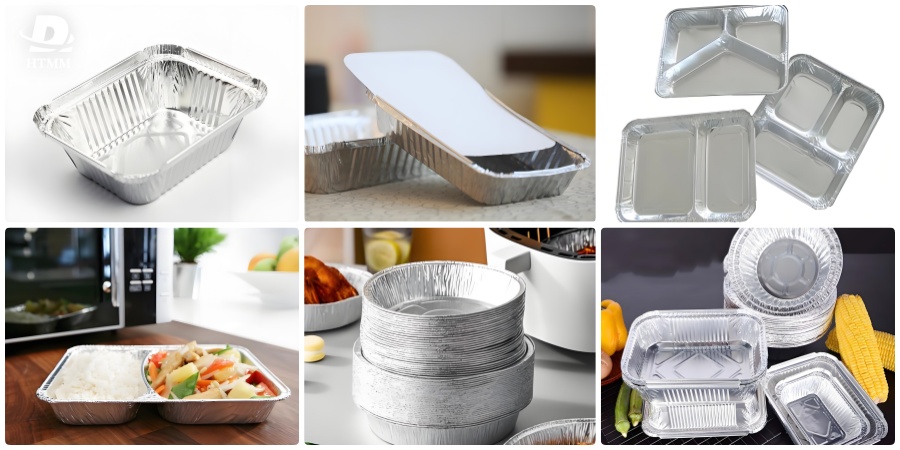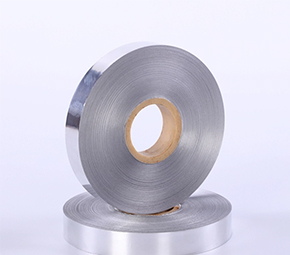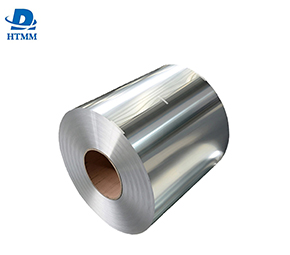We've all used aluminum foil containers at some point - whether bringing food for a party, ordering takeout or baking treats at home. But how much do you really know about these versatile kitchen helpers? Here are the answers to 20 of the most common questions people have about using aluminum foil containers.

What are the sizes of foil containers?
Foil containers come in a wide range of standard sizes to suit different needs. For takeout, you'll find 4-8oz cups and 6-16oz rectangular containers. Catering sizes range from 1/2 quart to 1 gallon capacities. You can also get specialty shapes like round pizza bases or baking pans in various diameters and depths.
Are foil containers better than plastic?
In many ways, yes. Foil containers are more environmentally friendly as they're 100% recyclable and don't leach chemicals. They also protect flavor better as plastic can absorb odors. Foil prevents cross-contamination and is grease/liquid-resistant for safe transport of saucy or oily foods.
Is aluminium foil container safe?
When used as intended, aluminum foil containers are completely food safe. The aluminum foil lining is very thin and non-toxic. It's also coated to prevent acid corrosion from foods. As long as the container is in good shape without dents or tears, it poses no health risks.
Can I put a foil container in the oven?
Yes, foil containers are oven safe - but only up to a certain temperature. Check the manufacturer's guidelines which is typically between 350°F-450°F or 175°C-230°C. Higher heat could cause the foil or coating to break down. It's best to avoid very high bake or broil settings.
What are the disadvantages of aluminium containers?
The main downside is they can't go in the dishwasher for cleaning. Hand washing is required. Very thin or damaged foil may tear or leak small particles in food. They also don't retain heat as well as other materials. Overall though, their benefits outweigh drawbacks for most uses.
Are aluminium takeaway containers oven safe?
In general, yes - but as with all foil containers, check the temperature guidelines. Standard takeout containers can withstand moderate oven heat up to 400°F/200°C for reheating or cooking foods fully wrapped in foil. Avoid broiling which gets too hot. It's best not to leave empty containers in high heat for extended periods either.
Are aluminum containers safe for food?
When manufactured and used properly, aluminum food containers are completely food safe. The thin aluminum lining is non-toxic and FDA-approved. Any coatings are also food grade. The main concerns are damage from very high heat or rough handling which could allow aluminum particles in food. Otherwise, they pose no safety risks.
Why is aluminium used for takeaway containers?
Aluminum foil is lightweight, flexible and a very effective barrier to moisture, grease and bacteria. These properties make it ideal for securely transporting takeout foods without spills or cross-contamination. It's also affordable and fully recyclable. Most importantly, studies show aluminum exposure from food containers is negligible compared to our daily dietary intake from other sources.
Foil takeout containers: Are they a sustainable option?
Yes, foil takeout containers are one of the most eco-friendly options. As mentioned, aluminum foil is 100% recyclable and highly reusable. It also requires much less energy to produce than plastic or paper alternatives. Their durability means a single container can replace many single-use packages over time. They also take up less space in the recycling or landfill.
How to dispose of foil takeout containers correctly
Empty and clean containers can be placed loose or bagged in your recycling bin. This is the best way to keep aluminum circulating within the recycling system. They should never be placed in regular trash. Some communities may ask you to remove food residue before recycling as well. Check your municipal guidelines for specifics.
Can you microwave aluminum takeout containers?
Most standard foil takeout containers are not suitable for microwaving. The foil or thin coating could spark or cause food to overheat in spots. Some specialty "microwave-safe" containers are available but always check the manufacturer's instructions first. It's generally safest to transfer food to another microwave-safe dish if reheating.
How Use an Aluminum Foil Container as Serving Plate
You can absolutely reuse empty foil containers as makeshift serving plates. Just make sure to thoroughly clean and dry them. Then fill with cut fruit, veggies, dips, cookies or other snacks. Fold the edges slightly for a polished look. You can even decorate the exterior with markers or stickers for a party theme. It's a eco-friendly way to serve snacks on-the-go too.
Is it safe to cook in aluminum containers?
While aluminum foil is suitable for some cooking applications, direct cooking in plain aluminum containers is not recommended. Uncoated aluminum could react with acidic foods like tomatoes. It's safest to use containers specifically labeled as "oven-safe" up to the stated maximum temperature. Alternatively, you can line containers with foil for extra protection.
Can I oven reheat chilli in aluminium trays with card lids?
Trays with only a thin foil or card lid are not intended for oven use, as the heat could damage or ignite these materials. However, oven-safe foil containers that are fully enclosed on all sides can safely hold chili for reheating in a pre-heated oven. Watch it closely and don't exceed the recommended temperature. It's best not to leave unattended.
Are aluminium baking trays safe?
Yes, aluminum baking sheets and trays are completely food safe when properly used. Look for ones labeled "oven safe" which have a durable coating to prevent reactions from high heat. Never use a tray that is warped, flaky or rusted. When baking on these trays, lower heat assures even cooking without hot spots. As with any cookware, avoid overheating an empty tray.
Are foil roasting trays good?
Foil roasting pans are very convenient for easy clean up of messy roast dinners. As long as the pan fully encloses the food on all sides, it can safely be used for moderate oven roasting up to 375°F/190°C. The thin foil may buckle or ignite at higher temperatures. It works best for casual roasting rather than very high heat methods like broiling.
Why do people put aluminum foil on pans?
There are a few good reasons to line baking pans with foil: It creates a non-stick surface for easy release of cakes, cookies and bar. Any crumbs or sticky messes are confined to the foil too. Foil also protects delicate pans from stains or damage during high heat cooking. Finally, it allows for hassle-free disposal of remains rather than messy cleanup.
Can I bake in an aluminium foil container?
Yes, aluminum foil containers are suitable for casual baking and as makeshift pans. But avoid very high heat methods and don't exceed the recommended maximum oven temperature. It's best to tent foil loosely over the top for ventilation rather than sealing it tightly. You can also line the container with a piece of parchment for easy food release. Watch baking times closely in foil pans.
What is the difference between aluminium foil and tin foil?
The terms are often used interchangeably but technically, tin foil contains tin whereas aluminum foil is made of aluminum. Aluminum foil is much more common nowadays and preferred for food use due to being lighter weight and less toxic than tin. Either material forms a effective barrier when used properly as a food wrapper or cooking liner.
Are foil trays good for baking?
Foil baking trays can work well for casual baking needs like cookies, muffins or smaller foods that require moderate oven heat. Look for heavy-duty foil trays rated for oven use. As with any foil product, don't exceed stated temperature limits which usually max out at 400°F/200°C. Foil may buckle or burn at higher heat so it's not suited for all baking applications like delicate
pastries.





